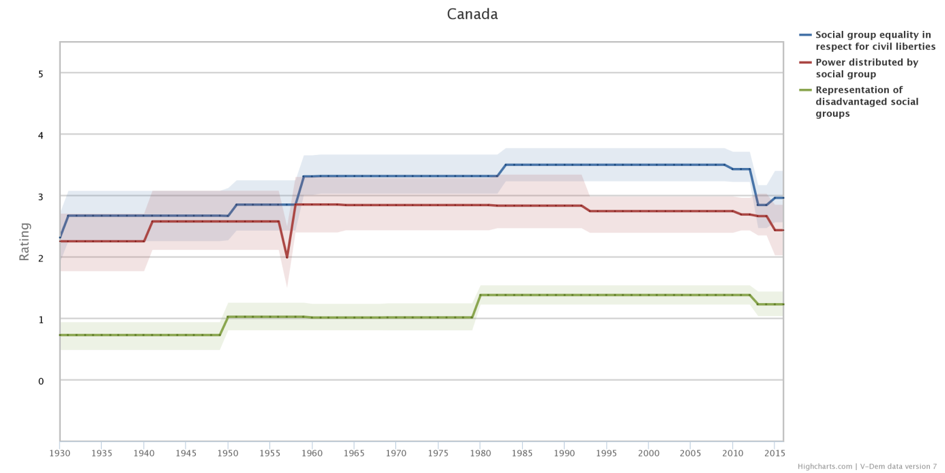Social group equality and power distribution in Canada
By: V-Dem Staff
Mar 05, 2018
On 14 February, Justin Trudeau announced a series of upcoming formal meetings with Canada´s Indigenous People to discuss legislation reforms to better secure their rights. The initiative emerges amidst heated debates over how the judicial system treats Canadian Indigenous People, and is seen as a ‘paradigm shift’.
This week’s graph examines the distribution of power and the equality in respect for civil liberties according to social groups in Canada. V-Dem’s indicator on Power distributed by social group measures how political power is shared between groups in society. The indicator on Social group equality in respect for civil liberties relates to different social groups and to what extent they enjoy the same level of civil liberties. The final indicator assesses how well these social groups are represented in the national legislature.
Canada’s Indigenous People’s rights were assured only in the 1982 Constitution, thanks to the pressure exerted by aboriginal groups. Yet, the effectiveness of these protections is questioned. Although the indicator on social group equality concerning civil liberties is high, equal treatment under the law and fair trial are still sensitive topics. Aboriginal groups in Canada still have to assert recognition and implementation of their rights in costly and extensive court challenges. Furthermore, high values in power distribution could be a reflection of aboriginal political organizations actively advocating their rights and influencing policy-making. However, aboriginal political representation in the national legislature is still low, as it can be perceived by the representation indicator. This new initiative might reflect the government’s attempts to reduce disparities and increase Indigenous People’s voices.
If you want to learn more about distribution of power or social group equality in Canada, use our online analysis tools at v-dem.net.


